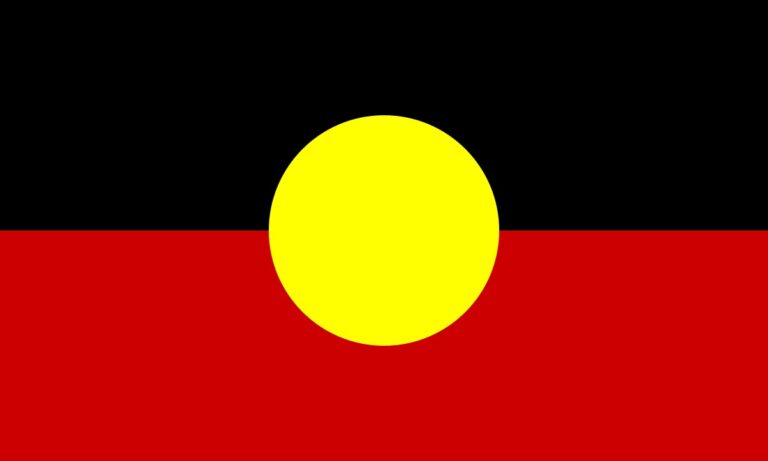Last week the National Alcohol Awards were announced and the Northern Territory was declared the winner as the jurisdiction that has taken the strongest policy action in 2018 to address alcohol harm.
On Drink Tank today, Professor James Smith from the Menzies School of Health Research looks at a couple of the major policies adopted by the government which were influential in securing this award for the Territory.
The costs and harm from alcohol consumption in Australia are well documented.
While the Australian Guidelines to Reduce Health Risks from Drinking Alcohol are currently being reviewed,the latest global evidence suggests there is no safe level of alcohol consumption.
Harmful levels of alcohol consumption – both binge drinking and sustained high and moderate levels of drinking – increase the propensity for risk taking associated with violence, crime, drink driving, unsafe sex, alcoholic poisoning, drinking while pregnant and a wide raft of anti-social behaviours.
Alcohol’s harm extends to those around drinker and arguably the totality of this harm is more than that which accrues to the drinker. This harm includes family and domestic violence, child neglect, diminished industry productivity.
The latest data tells us the proportion of people drinking in excess of the recommended Australian risk guidelines has been declining since 2010. Generally speaking, this is good news. However, there is reason to be cautious, with population demographics changing and the decline being marginal given current average per capita drinking levels are more than double those in the 1930s.
For example, we know that around one in three Australians continue to binge drink, and that alcohol remains the most common principal drug of concern for which Australian’s seek treatment. Also, we know that alcohol is an addictive drug. Dependence to alcohol requires expensive therapeutic and treatment options to minimise harm to the individual, their family, and the broader community.
The chronic impact of alcohol consumption on population health in Australia is also well documented. That is, excessive alcohol consumption exacerbates health issues associated with chronic conditions such as diabetes, cardiovascular disease, mental illness and cancer.
Furthermore, excessive alcohol consumption is positively associated pathological gambling, spending more money while gambling, and other psychiatric disorders. As such, it adds a layer of complexity to the way in which policy and program interventions are, and continue to be, designed.
The health promotion community has been active in the planning, implementation and evaluation of alcohol harm minimisation strategies for decades. These have often reflected a comprehensive approach to health promotion and have been supported by respective state and national alcohol harm minimisation strategies and policies.
While this has contributed to strengthening the evidence base about what works and why, concern has also been raised about the policy rhetoric and lack of tangible action. When compared with other wicked public health problems, such as tobacco control, we have not yet seen an equivalent trajectory of health improvement.
A notable area of difference between alcohol harm minimisation and tobacco control measures has been the relative emphasis placed on sustained policy and legislative reforms. In spite of a comprehensive evidence base, there remains significant room for improvement in this regard in Australia.
Two promising alcohol policy and legislative interventions are currently being implemented in the Northern Territory (NT).
Banned Drinker Register (BDR)
The NT has the highest reported rates of alcohol consumption in Australia, with corresponding high rates of alcohol fuelled violence and crime. Meaning that the NT is a fertile ground for alcohol policy interventions.
The BDR is a policy initiative which aims to improve community health and safety by reducing alcohol-related harm.
An explicit alcohol supply reduction measure that involves placing people that consume alcohol at harmful levels, to themselves or others, onto a register which prohibits the consumption, possession or purchase of alcohol.
This response usually gets triggered through engagement with police, courts, the BDR registrar or other authorised officers, often as a result public drunkenness or acts of violence. A self-referral pathway is also available.
In its current format, the limitation of purchasing is enacted through the electronic scanning of personal identification at take-away alcohol outlets. The length of time an individual is on the BDR can be three, six or 12 months depending on the reason and severity of issues underpinning the referral.
A recent six-month process evaluation revealed that the BDR was meeting its policy objectives and the Northern Territory Government has indicated its intent to drive further reforms in this space.
While acknowledged that ongoing monitoring and evaluation of the BDR is required – particularly an impact evaluation and an exploration of its intersection with other policy initiatives – early signs are promising.
Minimum Unit Price (MUP)
In addition to the BDR, the Northern Territory Government introduced a MUP on alcohol on 1st October 2018.
The MUP involves setting a minimum cost on take-away alcohol – per standard drink – as an explicit supply reduction strategy. In the NT, the MUP was set at AUD$1.30 per standard drink, despite the policy and legislation review recommending a MUP of AUD $1.50 per standard drink.
Nevertheless, the NT is the first jurisdiction in Australia to introduce legislation of this nature, building on similar initiatives implemented in Canada and Scotland.
The intent of MUP is to reduce accessibility of cheap alcohol – primarily cheap wine, fortified alcohol and some low-cost beer.
Despite having received significant public scrutiny in both popular and social media during its introduction, there is an emerging global evidence base showing that MUP can reduce alcohol consumption, particularly among people that drink alcohol at harmful levels, and among people from low socio-economic status backgrounds.
MUP is different from other price policy measures, such as a volumetric tax on alcohol, in that the the retailer retains the increased revenue.
In this sense, it is more palatable to the alcohol industry. However, it is also susceptible to minimally regulated price hikes of alcohol, for example, the cost of mid-range wine.
The retention of extra revenue by the alcohol industry is something of a lost opportunity for public health. Indeed, a hypothecated volumetric tax arrangement, where income generated from alcohol taxes is deliberately reinvested into health promotion and prevention efforts is favoured and frequently regarded as a preferred option among the public health community. It is therefore critical that the Northern Territory Government invests in the monitoring and evaluation of this new legislation.
While common-sense suggests it is most likely to be effective with parallel volumetric tax and secondary supply reduction measures, it is imperative to understand the short, medium and long-term impacts of MUP.
It will be equally important to assess the effectiveness of the introduction of a MUP in the NT, where the social and cultural contexts may differ to those of Canada, where the evidence-base is currently strongest.
Conclusion
This is a snapshot of two innovative alcohol policy and legislative developments, in a jurisdiction with the highest reported alcohol consumption in Australia.
We recognise that other promising policy interventions are being planned and implemented in other state, national and global contexts, such as moderate restrictions to alcohol trading hours and outlet numbers.
We also note the importance of changing narratives about the culture of drinking, both in Australia and elsewhere across the world, if population health gains are to be realised.
As such, we advocate for scholarly reviews, original research and policy evaluations relating to innovative alcohol policy and legislative reforms across the Australasian region to be published in the Health Promotion Journal of Australia. We welcomealcohol interventions which explicitly aim to reduce health inequities among the most vulnerable populations affected by the harmful consumption of alcohol.
Health promotion scholarship, existing alcohol harm minimisation strategies and emerging evaluations tell us that more comprehensive approaches to reduce alcohol consumption in Australia are required.
Ideally, these need to involve a suite of complementary strategies – including health education, social marketing, provision of health information and concurrent action on the social determinants of health – in parallel to policy and legislation innovation.
We encourage all state, territory and federal governments, and research funding bodies, to prioritise evaluation work of this nature. Doing so will help to reduce the devastating impact of alcohol on the Australian community.







